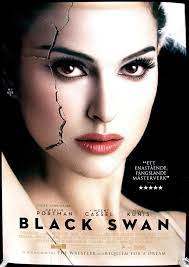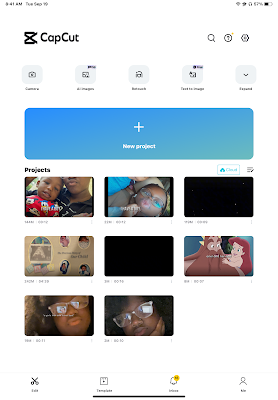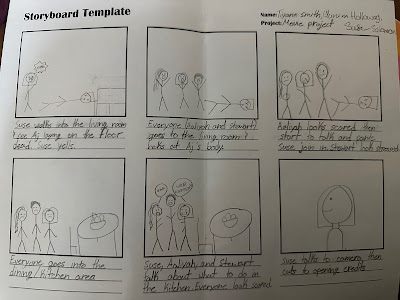Genre research: Psychology
Further exploration into the psychological genre has allowed for us to spot things that are in line with other pieces of media within the same genre including:
Common CAMS
Angles High Angle: A character may seem more diminutive or exposed from this viewpoint. It could imply dominance or power dynamics.
Low Angle: A character may appear more intimidating or strong when shot from a low viewpoint, which may evoke feelings of intimidation or authority.
Eye Level: Eye level filming is regarded as impartial and might facilitate a closer emotional connection between the viewer and the characters. In dialogue scenes, it is frequently utilized.
Movements
Zoom In/Out: Zooming can be utilized to draw attention to specifics, amplify feelings, or highlight significant elements. An abrupt zoom can also have this effect.
Pan: Panning offers a dynamic viewpoint and is frequently employed to expose new details in a scene or to track a character's progress.
Tilt: You can emphasize depth or height in a scene by using tilting to expose vertical features. Strategic use can likewise have the effect of confusing someone.
Shots
Close-Up: Close-up shots give the viewer a feeling of intimacy and enable them to empathize deeply with a character's feelings.
Medium close-up: MCU shots are frequently employed in dialogue sequences so that viewers can concentrate on the facial expressions and feelings of the characters.
Medium shot: Multiple shots can serve a variety of functions, such as illustrating character interactions and responses.
Common CLAMPS
Costumes
Symbolic Clothing: Costumes might have symbolic features that allude to the topics of the story or the character's mental state. This could involve certain hues, designs, or items that have deeper significance.
Dressing in uniforms and professionally: Characters in formal or professional contexts may dress in uniforms or other formal clothes. This can represent the psychological restraints in those contexts by adding an extra layer of conformity or constraint.
Every day and Casual Clothes: Characters in environments that are more relatable or ordinary might dress in regular clothes. Shifts in character development or psychological states may be indicated by changes in attire.
Lighting
Dim Lighting: To highlight the psychological intensity of a scene, low-key lighting is frequently employed to create suspense, tension, or a feeling of mystery.
High Lighting: By eliminating the reassuring shade of shadows, high-key lighting can be utilized to symbolize openness and normalcy or even to evoke discomfort.
Dark and moody lighting: By highlighting a character's inner conflict or the duality of the characters, chiaroscuro lighting can heighten the psychological effect of a scene.
Acting
Depth of Feeling: A story's psychological impact is amplified when it possesses the capacity to convey emotional depth, which enables the audience to form a deep emotional connection with the characters.
Subtlety and Delicately: By evoking a sense of authenticity and realism, subtle and nuanced acting can help the viewer identify with the characters' inner conflicts.
Internalization: Internalized performances have the power to pique viewers' curiosity and encourage them to understand and identify with the inner thoughts and feelings of the characters.
Make-up
Natural and Gentle Cosmetics: Using less makeup can give characters a more realistic look, which helps the audience focus on their expressions and feelings.
Pale or Tired Appearances: Pale makeup can visually convey a character's physical and emotional exhaustion, which heightens the mood of the movie as a whole.
Baggy eyes with dark circles: By illustrating a character's lack of sleep or mental conflicts, this technique helps to depict psychological stress.
Props
Journals and Diaries: Journals and diaries give the spectator access to a character's innermost feelings and thoughts, giving us insight into their psychology
A look at Polaroid photos: Pictures can serve as symbols for unsolved conflicts, traumatic experiences in the past, or memories that haunt the characters.
Mirror: Mirrors can emphasize a character's internal difficulties or development by encouraging self-examination and reflection.
Setting
lonely Sites: Distant locations heighten emotions of isolation, distrust, and susceptibility, amplifying the psychological influence of the story.
City Environments: Urban environments can accentuate themes of isolation, loneliness, and the difficulties in figuring out intricate social networks.
Restricted Areas: Setting the characters in confines highlights their restricted space—both physically and mentally—and heightens the stress.
Editing
Montage: Montage is a technique used to make information flow smoothly so that viewers may make connections between seemingly unrelated pieces and develop a psychological story.
Cutting across: Crosscutting can intensify the narrative's psychological impact by fostering a sense of urgency and connectivity.
Flashforwards and Flashbacks: Filmmakers can examine characters' experiences, trauma, or future psychological growth by utilizing flashforwards and flashbacks.
Sounds
Soft Soundscapes: Ambient soundscapes heighten the audience's awareness of the surroundings and subtle psychological aspects while also adding to a sense of discomfort.
Simple or Silent Audio: The audience may feel uneasy and anticipate something when there is no sound, which enables them to concentrate on the visual clues and psychological aspects.
Sound Effects and Discordant Music: Discordant noises have the power to evoke unease, panic, or confusion, which heightens a scene's psychological effect.
Movies that follow this genre include, "Eternal Sunshine of the Spotless Mind", "Inception", and "Fight club."
The psychological genre can bring many different levels and layers of creativity. I find this especially interesting to touch upon because there are so many outcomes and paths you can take in finding a concrete plot. Things I don't like is the way that it's easily able to be convoluted if not handled right. This can kill off many potential ideas in fear of the audience not understanding.




Comments
Post a Comment